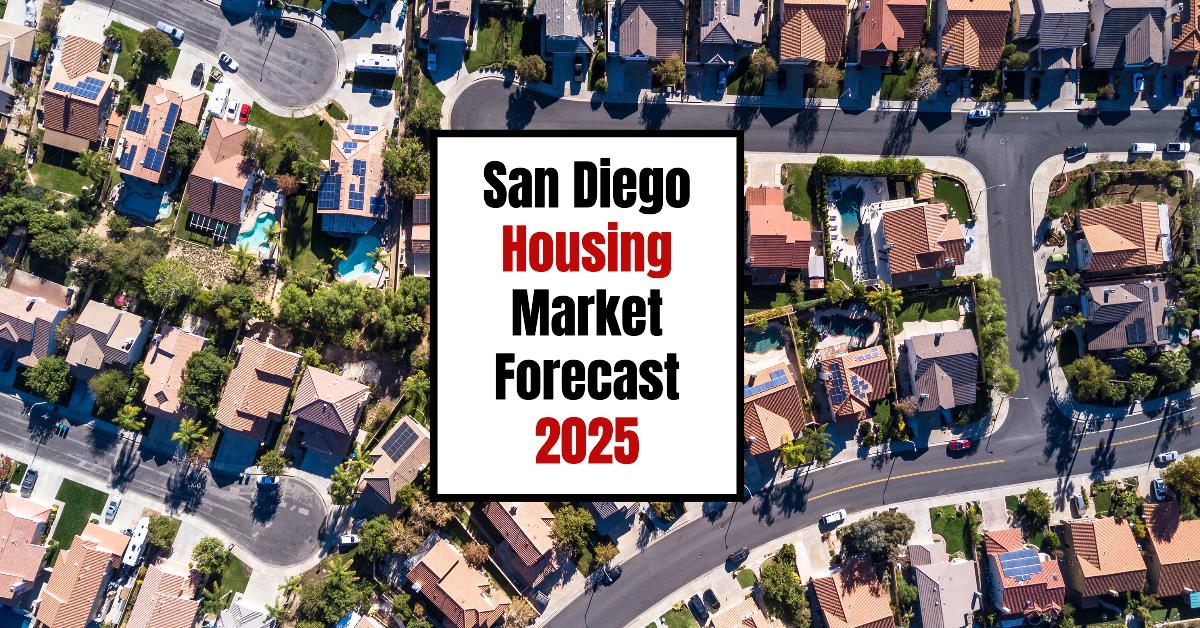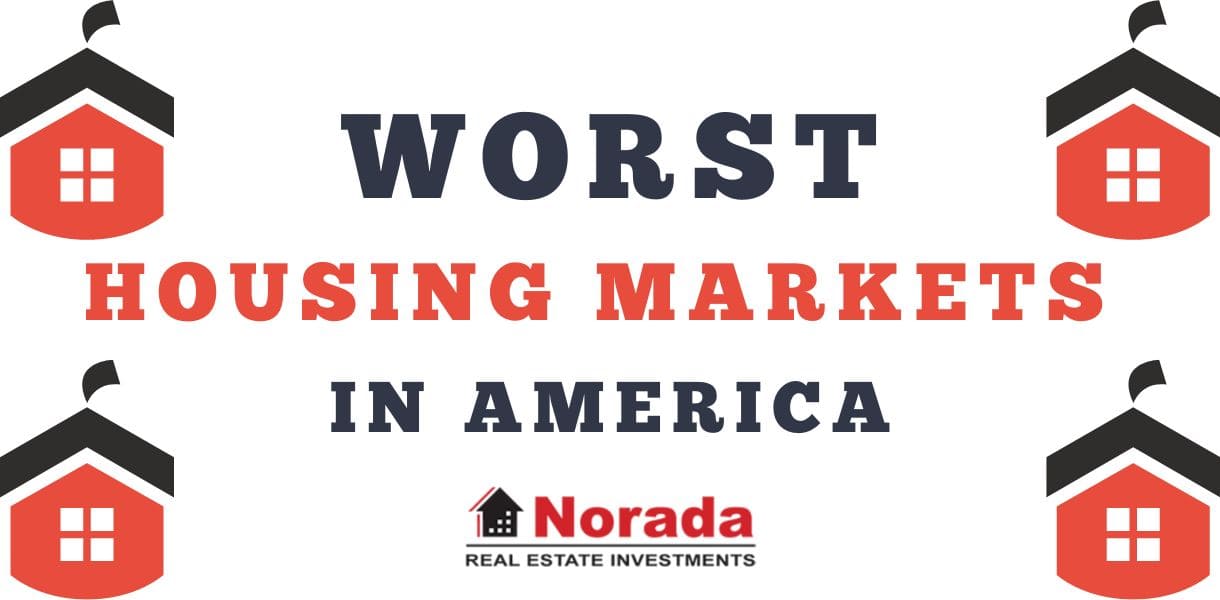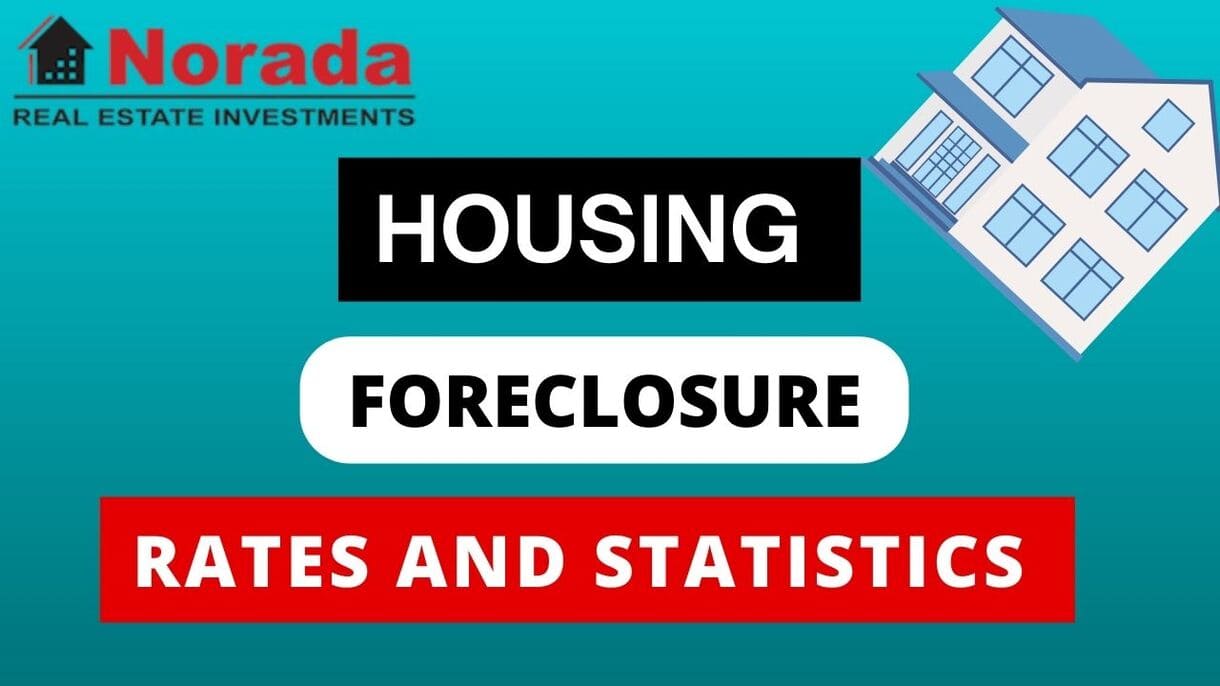If you're thinking about buying or selling a home in San Diego, you've probably been hearing all sorts of things about the housing market. Is it hot? Is it cooling down? The truth is, the San Diego housing market is showing signs of stabilizing, with modest price increases and a slight rebound in sales activity, largely influenced by fluctuating mortgage rates. This means that while it's not the frenzy we saw in previous years, opportunities are definitely emerging for those who understand the current dynamics. Right now, in San Diego, we're seeing a market that’s becoming more balanced, offering a more navigable path for many.
San Diego Housing Market Trends in 2025:
A Glimpse at the Numbers: What the Data Tells Us
Let's cut through some of the noise and look at what the recent reports are saying. According to the California Association of Realtors (C.A.R.), statewide existing, single-family home sales saw a modest uptick in August. While the numbers are still slightly below last year's pace, this rebound is a positive signal.
Key Statewide Trends (August 2025 vs. August 2024):
- Sales: Existing, single-family home sales were down a slight 0.2% year-over-year.
- Median Home Price: The statewide median home price rose 1.2% year-over-year to $899,140.
This might seem small, but within these statewide figures are nuances that are crucial for understanding a local market like San Diego.
Connecting the Dots: How Statewide Trends Affect San Diego
San Diego County is a significant part of Southern California, and its market often mirrors broader regional trends, but with its own distinctive flavor. Southern California as a whole saw its median home price rise by 1.2% year-over-year in August. This is right in line with the statewide average and suggests that while we aren't seeing explosive growth, the market is holding its value.
Here's how the numbers broke down for San Diego County specifically, based on the available data:
- San Diego County Median Sales Price: $1,025,000 in August 2025. This is a 1.5% increase compared to August 2024, when the median price was $1,010,000.
- San Diego County Sales Volume: Sales in August 2025 showed a slight dip of -0.6% year-over-year.
What this tells me is that while the number of homes selling might be marginally fewer than last year, the value of the homes that are selling is inching upward. This is a sign of a more stable market, rather than one that's overheating. It suggests that buyers are finding homes they are willing to pay for, and sellers are getting fair prices.
The Interest Rate Influence: A Delicate Dance
One of the biggest drivers of housing market activity is, and always has been, mortgage interest rates. When rates are low, more buyers can afford more house, and demand increases. When rates rise, affordability decreases, and demand can cool.
In the months leading up to August 2025, we saw a modest improvement in mortgage rates, which C.A.R. attributes to a boost in pending sales. For buyers, even a small drop in interest rates can make a significant difference in their monthly payment, potentially opening doors to homes that were previously out of reach. This is likely a major reason behind the stabilization we're seeing.
The 30-year fixed mortgage rate averaged 6.59% in August 2025, compared to 6.50% in August 2024. While this might seem like a small difference, it's the overall trend and perception that impacts buyer psychology. When rates are perceived as falling or stabilizing, buyers become more confident.
Inventory Check: How Much is Out There?
Inventory is another critical piece of the puzzle. When there are lots of homes for sale, buyers have more options, which can lead to more negotiation power. When inventory is low, competition can become fierce.
Across California, the Unsold Inventory Index (UII) edged higher in August to 3.9 months, up from 3.2 months in August 2024. This means there's a bit more breathing room for buyers. In simpler terms, it would take about 3.9 months to sell all the homes currently on the market if no new ones were listed.
For San Diego County specifically, the UII was 3.3 months in August 2025, an increase from 2.8 months in August 2024. This is a very welcome development for potential buyers. More inventory generally translates to:
- More Choices: You're more likely to find a home that truly fits your needs and budget.
- Less Urgency: You have a bit more time to make decisions without the pressure of a bidding war on every single listing.
- Negotiation Potential: While San Diego is always a competitive market, slightly higher inventory can give buyers more leverage to negotiate on price or terms.
Days on Market: How Long Are Homes Sitting?
The median number of days it took to sell a California single-family home in August 2025 was 31 days, up from 22 days in August 2024. This increase in time on the market is directly related to the slightly higher inventory and the moderating demand.
In San Diego County, the median time on market was 27 days in August 2025, an increase from 17 days in August 2024. This signifies a clear shift. Homes are taking longer to sell than they did last year. This isn't necessarily a bad thing; it means the market is becoming less frantic. Sellers need to be realistic about pricing and prepared for a slightly longer selling process. Buyers, on the other hand, have a bit more time to conduct their due diligence and make reasoned offers.
What This Means for Home Buyers in San Diego
If you're a buyer in San Diego right now, I'd say this is a potentially good time to be actively looking. The increased inventory and slightly longer days on market mean you have a better chance of finding the right home without facing the extreme competition of the past.
- Opportunity Knocks: With more homes available and less pressure, you can be more strategic in your search.
- Negotiation Power: While San Diego is still a desirable market, you might find more room to negotiate on price or request seller concessions. The sales-to-list price ratio in August was 98.3%, meaning homes generally sold slightly below their asking price, a contrast to last year's 100%. This is a subtle but important indicator.
- Focus on Value: Use the current environment to hone in on properties that offer the best long-term value, rather than just jumping on the first thing you see at any cost.
However, don't misunderstand. San Diego remains a sought-after location, and desirable properties will still attract multiple offers. It's crucial to be financially prepared, have your financing in order, and work with a real estate agent who truly understands the local nuances.
The Nuances of San Diego Neighborhoods
It's vital to remember that San Diego is not a monolith. Different neighborhoods and even different streets can behave very differently. For instance, I see that while Inland Empire saw a modest price increase of 2.5%, some areas in the San Francisco Bay Area experienced declines. This regional variation is even more pronounced at the neighborhood level within San Diego County itself.
Areas known for their family-friendly atmosphere and good school districts might see consistent demand, while luxury coastal properties could be more sensitive to economic shifts. Similarly, starter homes in more affordable pockets of the county might see more buyer activity as people seek value.
My personal observation is that certain coastal communities and highly desirable inland areas continue to command strong prices and see consistent interest, even with slightly longer sell times. Meanwhile, appreciating neighborhoods with good infrastructure and amenities are also holding their own.
Looking Ahead: What to Expect
The market is showing signs of grounding itself. While the days of rapid, double-digit appreciation might be behind us for now, that doesn't mean the market is collapsing. Instead, it’s maturing into a more sustainable phase.
The key factors to watch in the coming months will be:
- Interest Rate Stability: If rates remain stable or continue to ease, we could see a further increase in buyer activity.
- Economic Health: The broader economic picture in California and the nation will continue to play a role.
- Inventory Growth Pace: Will inventory continue to grow at a similar pace, or will it slow down as we head into the typical fall/winter seasonal slowdown?
As of August, the pace of inventory growth had actually slowed down from previous months, suggesting that while supply is up year-over-year, it might not continue to accelerate dramatically. This could help keep the market from becoming oversaturated.
My take is that we're likely to see a continuation of this more balanced market. It's a market where informed buyers and sellers can succeed. It rewards careful planning, realistic expectations, and a solid understanding of local conditions. It’s not about waiting for a massive drop in prices, but about understanding where value lies and making smart decisions when the time is right for you.
Ultimately, the San Diego housing market is resilient. It's always been a desirable place to live, and that fundamental demand isn't going anywhere. The current trends suggest we're moving into a phase where buying or selling is more about thoughtful strategy than simply riding a wave of rapid appreciation.
San Diego Housing Market Forecast 2025: What's Next for Home Prices?
Now, let's dive right in: what's the San Diego housing market forecast looking like? Based on the latest data, it seems we might see a slight dip in home values in the coming months. Experts predict a slight dip in home values in the near future, but a “crash” is unlikely.
The San Diego-Carlsbad average home value is currently $941,517, showing a 1.6% decrease over the past year, with homes going pending in roughly 19 days. Let's dive deeper into what's influencing this forecast and what it could mean for you.
What the Experts are Saying:
Zillow's latest forecasts provide some insights into the coming months:
| Timeframe | Predicted Change in Home Values |
|---|---|
| July 2025 | -0.7% |
| September 2025 | -2.1% |
| June 2025 – June 2026 | -1.5% |
This suggests a gradual cooling off of the San Diego housing market over the next year, but not a drastic decline.
How Does San Diego Compare?
Let's see how San Diego's housing market forecast stacks up against other major California metros:
| Region | Predicted Change by July 2025 | Predicted Change by September 2025 | Predicted Change June '25 – June '26 |
|---|---|---|---|
| Los Angeles, CA | -0.4% | -0.9% | -1.3% |
| San Francisco, CA | -1% | -3.2% | -6.1% |
| Riverside, CA | -0.5% | -1.3% | -0.9% |
| Sacramento, CA | -0.7% | -2.1% | -3.7% |
| San Jose, CA | -1% | -2.6% | -4% |
| Fresno, CA | -0.3% | -1% | -1.2% |
| Bakersfield, CA | -0.3% | -0.8% | -0.1% |
| San Diego, CA | -0.7% | -2.1% | -1.5% |
As you can see, San Diego's projected decline is similar to other major California cities, suggesting a statewide trend towards slightly lower home values. San Francisco is seeing a more significant projected decline.
Nationwide Trends: What's Happening Across the US?
Lawrence Yun, the Chief Economist for the National Association of Realtors (NAR), is quite optimistic for the future:
- Existing Home Sales: He expects a 6% rise in 2025 and a whopping 11% jump in 2026. That would be a great recovery!
- New Home Sales: Projected to increase by 10% in 2025 and 5% more in 2026. This will help with the low housing supply.
- Median Home Prices: Forecasted to rise by 3% in 2025 and 4% in 2026.
- Mortgage Rates: Expected to average 6.4% in the second half of 2025 and potentially drop to 6.1% in 2026. He calls low mortgage rates the “magic bullet” to increasing market activity.
So, Will Home Prices Crash in San Diego?
Based on the data and expert opinions, a housing market crash in San Diego seems unlikely. While Zillow predicts some moderate price softening in the short term, the overall market seems to be stabilizing. Demand remains relatively high, and experts are predicting positive growth over the long-term. Mortgage rates may come down in the future, which historically has pushed home prices up and made it easier for people to buy houses.
My Take:
I believe the San Diego housing market will likely experience a gentle correction rather than a crash. The area remains highly desirable. If mortgage rates drop as predicted, we could see a resurgence in buyer activity. If you're looking at buying, now might be a good time to get in while prices are slightly down. And for sellers, understanding these trends can help you price your home competitively.
Looking Ahead to 2026
Following the trends outlined by NAR, a reasonable forecast for the San Diego housing market in 2026 would be a period of moderate growth. We could see an increase in home sales and a continued, although slower, rise in median home prices assuming mortgage rates hold steady or decline as predicted. I expect housing inventory to start playing catch up with demand.
San Diego-Carlsbad Housing Forecast
Reflects current market demand as of June 2025.
Homes are selling in around 19 days on average.
Active listings available as of June 2025.
New listings added in June 2025.
Sales price data as of May 2025.
Expected growth from June 2025 to June 2026.
“San Diego housing market will likely experience a correction in home prices rather than a crash.”
Why is Housing So Expensive in San Diego?
San Diego's allure is undeniable. Pristine beaches, perfect weather, and a vibrant city life make it a dream destination for many. But this paradise comes at a price, particularly when it comes to real estate. Let's delve into the factors driving San Diego's expensive housing market:
Limited Supply, High Demand
- Geography: Nestled between the Pacific Ocean and mountains, San Diego has limited developable land. This scarcity creates a competitive seller's market, pushing prices upwards.
- Desirable Location: San Diego's climate, job opportunities, and outdoor activities attract residents and retirees alike, placing constant pressure on a finite housing stock.
Economic Factors
- Strong Local Economy: San Diego boasts a diverse and thriving economy, fueled by a strong tourism industry, a growing tech sector, and a robust military presence. The economy grew in 2021, adding over $11 billion to its gross regional product (GRP) compared to pre-pandemic levels. In 2022, the San Diego metro area's real gross domestic product (GDP) was $257.34 billion, a significant increase from the previous year's $250.06 billion. According to the UCLA Anderson March Economic Outlook, San Diego County is expected to grow 2.7% in 2023. This economic strength translates to job growth and attracts professionals with higher salaries who can afford premium housing.
- Low Interest Rates (Historically): Over the past decade, interest rates have hovered near historic lows. This has significantly reduced the monthly mortgage payment for a fixed-rate loan, making homeownership more affordable for many buyers. For example, in 2016, the average 30-year fixed mortgage rate was around 3.5%. By 2 2021, that number had dipped below 3%, making it significantly cheaper to finance a home purchase. This easy access to cheap credit fueled a surge in buyer demand, which in turn drove up housing prices. While interest rates have risen in 2024, they remain historically affordable compared to long-term averages. However, even with slightly higher rates, the overall impact on affordability is mitigated by wage growth and a strong local economy.
Regulations and Taxes
- Development Restrictions: San Diego, like many coastal cities in California, faces challenges in balancing growth with environmental protection. Strict zoning regulations, lengthy permitting processes, and environmental impact reviews can significantly slow down or even halt new housing developments. This can stifle the ability to increase housing supply to meet the growing demand, putting upward pressure on prices. Additionally, citizen groups and environmental concerns can further complicate the development process. While these regulations are important for safeguarding the natural beauty and character of San Diego, they can also contribute to the limited housing inventory and high costs.
- Property Taxes: California has relatively high property taxes, with an average effective rate of 0.73% in 2023 according to the California Tax Foundation. This means that for a home valued at $1 million, the annual property tax bill would be around $7,300. High property taxes can impact affordability, particularly for first-time homebuyers or those on fixed incomes. However, these taxes also contribute to the overall perceived value of San Diego real estate. Property taxes are a major source of revenue for local governments, which use these funds to finance essential services like schools, roads, and public safety. Additionally, high property taxes can discourage speculation and absentee ownership, potentially leading to a more stable housing market.
National Trends
Nationwide Housing Market: While San Diego stands out, it's part of a larger national trend of rising housing costs. Investor activity and a national shortage of affordable housing contribute to the overall market dynamic.
The “Sunshine Tax”
San Diegans often jokingly refer to the high cost of living as the “sunshine tax.” While it might be a sardonic term, it reflects the reality that many people are willing to pay a premium to live in such a desirable location with a high quality of life.
How is the Rental Housing Market Doing in San Diego?
The San Diego real estate market has been ranked among the ten most expensive real estate markets in the country, though it ranks below several other West Coast cities. This creates massive demand for San Diego rental properties by those who simply cannot afford to buy homes.
The rental market will continue to grow as the city grows an estimated 500,000 population by 2050, adding tens of thousands each year. The median rent in San Diego is $2700. The rent you’d receive on single-family San Diego rental properties would, of course, be much higher.
Renters vs. Owners in San Diego
San Diego's property rental market is influenced by several factors, including the local economy, job opportunities, and the overall demand for housing. It's a city known for its mix of urban and suburban neighborhoods, each with its own rental and ownership dynamics.
San Diego had a diverse housing landscape with a mix of renters and property owners.
- Renters: San Diego has a significant population of renters, comprising individuals and families who lease residential properties. This includes apartments, condominiums, townhouses, and single-family homes. The exact percentage of renters relative to property owners can vary by neighborhood and demographic factors.
- Owners: San Diego also has a substantial number of property owners. These are individuals or entities who own residential properties and may either live in their properties or lease them out to renters. Property owners contribute to the diversity of the city's housing options.
Size of the Rental Market
The size of the San Diego property rental market is substantial, with a wide range of rental properties available to residents. This market includes apartments, houses, and various types of housing units. The exact size of the rental market can fluctuate based on factors like population growth, economic conditions, and housing development trends.
Real estate agencies, rental platforms, and government agencies often track and report on the status of the rental market, offering detailed insights into its size and dynamics.
For the most up-to-date and specific information regarding the current state of the San Diego property rental market, including the number of renters and property owners, it's recommended to refer to the latest reports and data from sources like local real estate associations, government housing agencies, and real estate websites.
San Diego's property rental market is an essential component of the city's real estate landscape, offering a wide range of housing options to its diverse population.
San Diego Apartment Rent Prices
As of July 2025, the median rent for all bedroom counts and property types in San Diego, CA is $2,800. This is +44% higher than the national average.
The monthly rent for an apartment in San Diego, CA is $2,499. A 1-bedroom apartment in San Diego, CA costs about $2,295 on average, while a 2-bedroom apartment is $2,928. Houses for rent in San Diego, CA are more expensive, with an average monthly cost of $4,150.
Rent prices for all bedroom counts and property types in San Diego, CA have remained the same in the last month and have decreased by 5% in the last year.
Housing Units and Occupancy
In terms of occupied housing units, San Diego has the following distribution:
- Renter-occupied Households: Renter-occupied households make up 53% of the housing units in San Diego, indicating a significant presence of renters in the city.
- Owner-occupied Households: Owner-occupied households account for 47% of the housing units, highlighting a balanced mix of homeowners in the area.
These insights provide a snapshot of the current rental market in San Diego. Rental prices have seen some fluctuations in recent months, with variations in different apartment types. The city offers a range of neighborhoods to suit different budgets and preferences, with a balanced mix of renters and homeowners.
Recommended Read:
- Is San Diego’s Housing Getting Very Expensive: Experts Predict
- San Diego Housing Market Booms With 9.4% Growth: Expert Predictions
- San Diego Housing Market Predictions: Soaring and Expensive!
- San Diego Housing Market Predictions: Prices Skyrocket 11.4%; What's Next?
- Is San Diego Real Estate a Good Investment?





